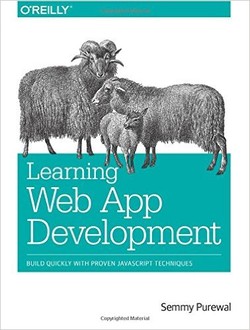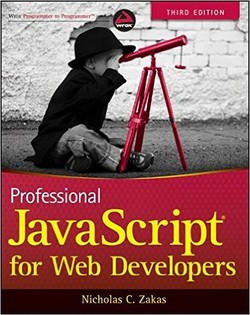توسعه وب موبایل
قیمت 16,000 تومان
امروزه برنامههای کاربردی وب2 (فیسبوک و توییتر) فراتر ار محدوده دسکتاپ رفته و بر روی دستگاههای موبایل نیز قابل استفاده است.
وبموبایل با توجه به موفقیت آیفون و بلکبری ، اهمیت ویندوزموبایل و ظهور Palmpre (و پلتفرم Webos آن) بسیار محبوب شده است. در این کتاب نویسنده وباستانداردها و اصول خاص تلفنهای هوشمند و دیگر ویژهگیهای مبتنی بر موبایلها را نشان میدهد و به شما آموزش میدهد که چگونه با استفاده از فناوریهای بهینهسازی شدهی مرورگرهای وب در تلفنهای هوشمند، میتوان وبموبایلهای تعاملی بسازید. در پایان این کتاب شما با آموزشها، ابزارها و تکنیکهایی آشنا میشوید که میتوانید با استفاده از آنها وبموبایل مورد علاقه خود را با پلتفرم دلخواه خود ایجاد کنید.
سال انتشار: 2010 | تعداد صفحات: 350 | حجم فایل: 7.99 مگابایت | زبان: انگلیسی
Beginning Smartphone Web Development
Today's Web 2.0 applications (think Facebook and Twitter) go far beyond the confines of the desktop and are widely used on mobile devices. The mobile Web has become incredibly popular given the success of the iPhone and BlackBerry, the importance of Windows Mobile, and the emergence of Palm Pre (and its webOS platform). At Apress, we are fortunate to have Gail Frederick of the well-known training site Learn the Mobile Web offer her expert advice in Beginning Smartphone Web Development, and Rajesh Lal, a Nokia Web engineer, who shares design guidelines for mobile Web. In this book, Gail and Rajesh teaches the web standards and fundamentals specific to smartphones and other feature-driven mobile phones and devices.
Shows you how to build interactive mobile web sites using web technologies optimized for browsers in smartphones
Details markup fundamentals, design principles, content adaptation, usability, and interoperability
Explores cross-platform standards and best practices for the mobile Web authored by the W3C, dotMobi, and similar organizations
Dives deeps into the feature sets of the most popular mobile browsers, including WebKit, Chrome, Palm Pre webOS, Pocket IE, Opera Mobile, and Skyfire By the end of this book, you'll have the training, tools, and techniques for creating robust mobile web experiences on any of these platforms for your favorite smartphone or other mobile device. What you'll learn
Build interactive mobile web pages that comply with industry standards and best practices.
Develop web sites using the markup languages of the mobile Web: XHTML-MP, Wireless CSS, and WML.
Use Mobile JavaScript and Ajax for client-side web interactivity.
Adapt the syntax and design of mobile web pages to target smartphone models.
Enhance mobile web pages to target advanced features of smartphone browsers.
Validate and compress mobile markup to optimize for network transmission and browser performance.
Simulate smartphone browsers using emulators and development tools. Who this book is forMobile application developers and their managers need to learn mobile web technologies because it's in their economic interest. Time-to-market and opportunity costs are significantly lower for web-based mobile applications than for native ones. Desktop web developers at software companies and IT departments of non-technology businesses need to learn mobile web technologies to meet the demands of managers who will soon be asking them to "mobilize this web site." These developers will want to do the minimum work possible to maximize the compatibility of their mobile web sites. The standards-based approach advocated in this book will allow them to build gracefully adaptive and portable mobile web experiences that perform well across mobile browser platforms. Table of Contents
Introduction to Mobile Web Development
Set Up Your Mobile Web Development Environment
Mobile Markup Languages
Device Awareness and Content Adaptation
Adding Interactivity with JavaScript and AJAX
Mobile Web Usability
Enhancing Mobile Web Pages for Smartphone Browsers
Optimizing Mobile Markup
Validating Mobile Markup
Testing a Mobile Web Site
Deploying a Mobile Web Site
How to Play Well in the Mobile Ecosystem
The Future of the Mobile Web











































